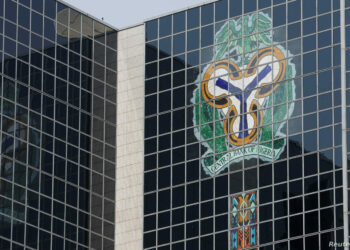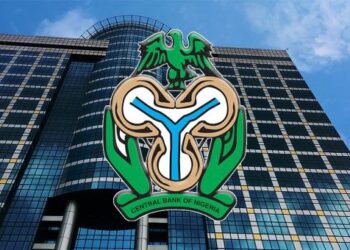Following the unexpected decision of the Monetary Policy Committee of the Central Bank of Nigeria’s (CBN) to impose a 75 per cent Cash Reserve Ratio (CRR) on non-Treasury Single Account (TSA) public sector deposits economists and players in the nigeran financial system have said it as a bold but unusual move to rein in excess liquidity in the system.
The Monetary Policy Committee (MPC), rising from its after its September meeting, had signalled a step towards monetary easing with a 50bps cut in benchmark interest rate to 27 per cent and a reduction in cash reserve requirement (CRR) form 50 per cent to 45 per cent, had introduced the 75 per cent CRR on non TSA public sector deposits.
While TSA balances include revenues, receipts, and payments of ministries, departments, agencies, parastatals, and other institutions of the Federal Government and are warehoused directly with the CBN, non TSA deposits represent state and local government funds typically maintained with banks.
According to analysts at Cardinal Stone, these balances tend to swell after FAAC distributions, injecting liquidity into the system with knock-on effects for foreing exchange stability and inflation.
Former member of the MPC and economist, Professor Michael Obadan, explained that while the rationale may not be immediately clear to the public, the apex bank is likely responding to the large volume of idle public funds still circulating outside the TSA framework.
“The monetary authorities probably have more information than we do. There are a number of public sector agencies that are not required to comply fully with TSA provisions but still hold huge deposits in commercial banks. By sterilising such deposits at 75 percent, the CBN is preventing them from inflating liquidity levels and destabilising monetary stability,” Obadan said.
Analysts estimate that at the end of 2024, non-TSA balances made up just 1.6 percent of the total money in circulation (M3), but the amount was still bigger than what state and local governments received from FAAC in December, about 1.3 times more
Obadan noted that while the policy might tighten liquidity for banks holding such deposits, it reflects the central bank’s resolve to forestall fiscal-induced distortions in money supply growth.
Also commenting, chief executive of the Centre for the Promotion of Private Enterprise (CPPE), Dr Muda Yusuf, noted that the measure would serve as a safeguard against volatility. “The 75 per cent CRR on non-TSA deposits is a prudent step to contain liquidity risks that could arise from fiscal operations. Without such control, excess public sector liquidity in the banking system could undermine recent progress in price stability.”
To analysts at Cardinal Stone, the new CRR on public sector funds “reduces the risk that large FAAC-related inflows will drive forex demand pressures at the parallel market, as outflows are expected to be more gradual and linked to actual expenditure patterns.
“For the banking system, the impact should be a function of the treatment of the new CRR on non-TSA deposits (e.g applied on total deposits as is the case with regular CRRs or focused only on new deposits), with the CBN expected to provide more clarity on operational dynamics.”
Also reacting, Ayokunle Olubunmi, Head of Financial Institutions Ratings at Agusto & Co, said the MPC decision broadly signals a shift to a more accommodative monetary stance, in line with global and regional trends.
“The MPC decision is largely signalling an accommodative monetary stance. This follows similar moves by central banks in developed countries and even across Africa. The response of foreign investors will depend on movements in treasury and OMO rates. Should the rates maintain a downward trajectory, foreign portfolio investors might be concerned. However, the bullish trend in the equities market provides opportunities for additional returns,” Olubunmi observed.





